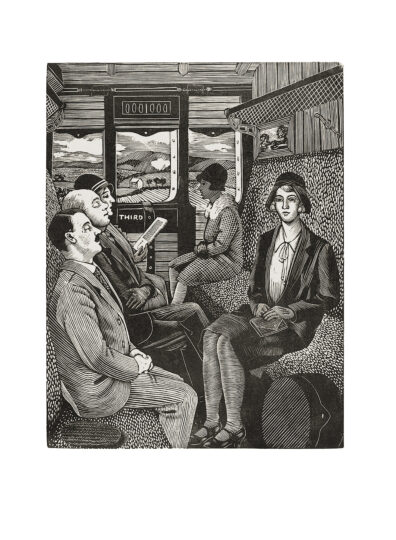17/01/25
Tirzah Garwood: Beyond Ravilious
Dulwich Picture Gallery, London
19 November 2024 – 26 May 2025
Four decades after Tirzah Garwood’s death, her friend, fellow artist and writer Olive Cook, wrote that, after her marriage to Eric Ravilious in 1930, Garwood “did no more engraving”, and “perhaps the medium of wood engraving was too exacting to combine with the domestic chores which she never found easy or congenial.” Indeed, Garwood wrote in a letter to another friend in 1936: “I always regret that I stopped working because it is difficult with a house to think about.” Yet, while reiterating in her autobiography that she “had very little time for thinking at all as Eric and I were constantly entertaining and being entertained in the village”, she continued: “Little John and marbling left me fully occupied. All that summer I was aware of being absolutely happy and knew myself to be most awfully lucky.” Thus, while maybe ceasing to make wood engravings, Garwood did not cease to make art, and, while she may have been better known as “Mrs Eric Ravilious”, she was producing work in various mediums before and after her marriage, not to mention during the period when they still presented as a happy couple, but had both fallen in love with other people. It is apparent, then, why this retrospective exhibition of Garwood’s work at the Dulwich Picture Gallery carries the subtitle “Beyond Ravilious”. Running parallel to Dora Carrington: Beyond Bloomsbury at Pallant House Gallery in Chichester, both exhibitions seek to portray their subjects as (incidentally female) artists in their own right, rather than defining them in relation to the men in their lives. Dulwich curator James Russell adds to this, writing in his introductory catalogue essay: “The main aim of Tirzah Garwood: Beyond Ravilious is therefore quite simple: to reintroduce her as an artist in her own right, exploring her fertile creative relationship with Ravilious before revealing the full range of her achievements.”

Read my full review here